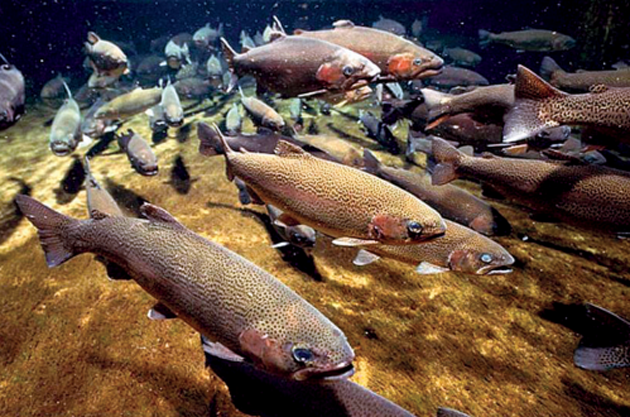Salmon lose way after truck ride downstream during drought
by Rich Pedroncelli / Associated Press / December 26, 2017 / excerpt
[dropcap]A[/dropcap] desperate decision to truck California’s native baby salmon toward the Pacific Ocean during the state’s drought may have resulted in generations of lost young salmon now hard-pressed to find their way back to their reproductive grounds.
With fewer native fall-run Chinook salmon able to make their way back home to the leading salmon hatchery in the state, that hatchery could have only about half as many young salmon as usual to release next spring, the Sacramento Bee reported Tuesday.
For those involved in safeguarding California’s struggling native salmon, it had always been understood that resorting to tanker trucks to carry tiny salmon to the ocean during the drought was a trade-off, John McManus, executive director of the fishing industry’s Golden State Salmon Association, told the Bee. Getting a lift on their migration saved countless salmon, but disoriented them.
Biologists say only a small fraction of those made it back to what would be their usual point of return, at the Coleman hatchery. Salmon managers are tracking now how many of the strayed salmon wound up in other watersheds.
Native salmon historically anchored food chains and habitats on both land and in the water in California. Salmon still boost the state’s economy by $1.4 billion annually, the salmon industry says.
Dams that cut native salmon off from their former upstream spawning grounds, and general human demands on water, have helped cut salmon numbers drastically in the state, making state and federal hatcheries crucial for the fish.
Since the 2014 class of salmon didn’t learn the route by swimming it on their own power, many have gone astray as they head back upstream now
To read the complete story . . .


